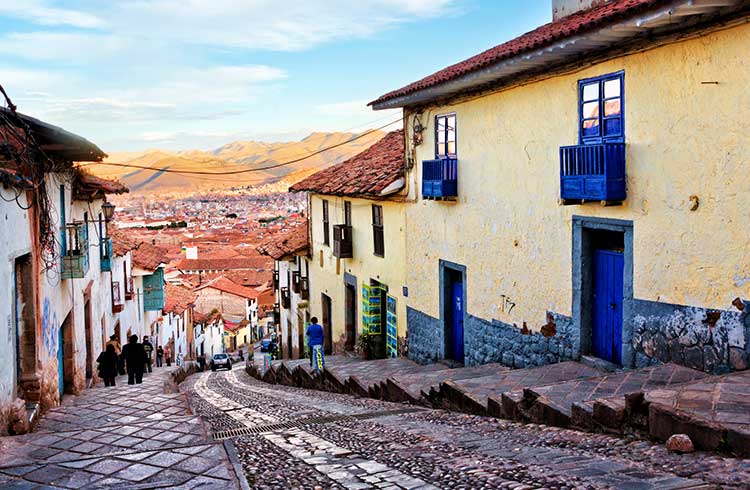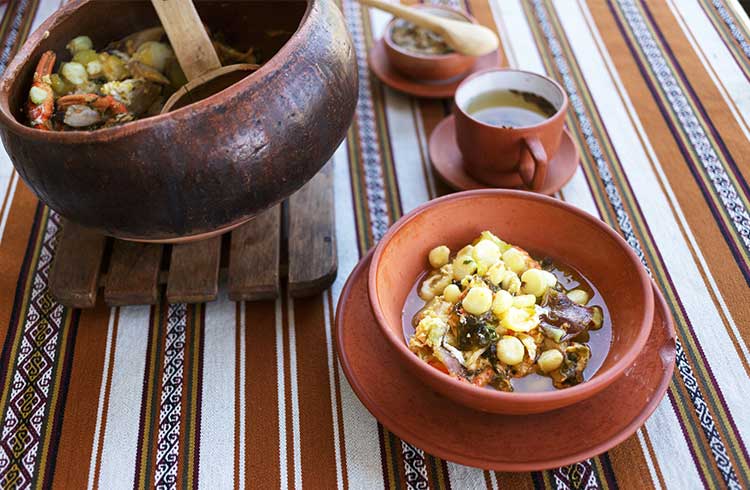Get to Know Peru Before You Go
You say Peru. I think alpaca. Ant can count on one hand the number of things he knew about the country before he traveled there.
 Photo © Getty Images/Anna Gorin
Photo © Getty Images/Anna Gorin
I only learned of the alpaca connection since arriving in New Zealand in August. By September, I was obsessed with a pipe-dream to chew straw, grow leeks and breed alpacas. I was almost over it, but the task to write an article on Peru has hurled me back into the herd. I love alpacas! No, I don’t. Yes, I do!
My immediate reaction was to write about Machu Picchu. Paste over an image of cloud tangled on its rocky, green crumbly summit, and no one will notice I’ve never visited. Then the Urubamba River flooded and isolated the ancient ruins until April, and I was forced back into the imaginary paunch of a sympathetic alpaca.
So what do I know about Peru? Well, I know it’s a South American hotspot, popular with backpackers. Its capital is Lima, and its most famous site — the tourist capital — is the aforementioned Machu Picchu. I also know of the city of Cuzco, from Che Guevara who spluttered through on The Mighty One (his Norton motorcycle). I’m sure they speak Spanish, and I recall hearing that Peruvians eat roasted guinea pigs. Yes, those over-sized hamsters, more often found limping around cages in children’s bedrooms. Two and a half cities, and a Spanish speaking, guinea-pig-nibbling alpaca.
So, I had a one-hour lunch break. How much more could I discover?
- Backpacker Taps Government Leaks
- Peru: The Brown Stuff
- Cost of Basic Living in Peru
- Hostess with the Mostess
- Travel in Peru
- Local Knowledge
Backpacker Taps Government Leaks
The first stop on my fact-finding tour was the CIA Factbook. Yes, the same CIA which fuels the X-Files which fuels TV addicts, which fuels obesity, which fuels death — however, World Nomads aren’t keen on my conspiracy theories, so I’ll keep this clean and to the point. There are aliens in Per...[censored].
The CIA World Factbook is always one of the first places I check when I’m researching a destination. It delivers no-nonsense facts about the country, giving me a non-emotional framework to build an opinion.
The CIA informed me that Peru is on the west coast of South America, and borders five of continent’s twelve countries. Apparently, the country suffers from deforestation, and its capital, Lima is choked by air pollution. The nation shares control of Lago Titicaca — the world's highest navigable lake — with Bolivia, and one of the peaks of Nevado Mismi is the ultimate source of the Amazon River. It’s also home to 29.5m people (the world’s 39th highest) and its terrain is a mixture of dry and rugged highlands, lowland jungle, and coastal plains. Coastal plains full of cigar-shaped
The predominant religion is Roman Catholic (81.3%), and Independence Day is July 28th. I even know it has 144 unpaved runways, and the notorious Colombian drug trade has stained the shared border. In fact, Peru is now the world’s second-largest producer of cocaine. That took me five
Peru: The Brown Stuff
After the official facts, I
Gordie’s Gang also highlights that “Street demonstrations and protests are commonplace in Peru, frequently occurring suddenly and sometimes turning violent”, and that the drug trade is a reality, while sensibly concluding that travel insurance wouldn’t be such a bad idea. They state, “Street crime, including muggings and thefts, is a significant problem in Lima, Cusco, Arequipa and other major cities.” They suggest caution when booking white-water rafting trips on Lake Titicaca, and helpfully point out that “If you plan to travel to Venezuela and some Central American destinations from Peru, you will be required to present a Yellow Fever vaccination certificate, issued at least 10 days prior to departure, at the airline desk.” Priceless information. One page. Cinco
Cost of Basic Living in Peru
For a rough cost of living, I skim HostelWorld and discovered I can score a private room in Lima for £8 a night, and PintPrice.com told me a beer averages around 80p, which according to BBC Weather, can be supped in Lima in comfortable year-round temperatures.
I felt the Peruvian in me rising up. Suddenly I was a coked-up, Spanish-speaking Roman Catholic alpaca, in search of the Amazon River’s source, some grilled guinea pig
Hostess with the Mostess
This article’s host, WorldNomads.com aren’t purely purveyors of great value travel insurance, they also store a swollen cache of travel information. A quick
That’s without even touching the Lonely Planet’s official montage of alpaca-sponsored advice. I ventured eagerly into the domain of World Nomads’ well-known
Travel in Peru
With half an hour to
Lest we forget Twitter’s local rival. I challenged the behemoth of Facebook to deliver “Peru” and it slammed down over 3,200 results (though many are in native Spanish). Narrowing this down by searching “Travel Peru” drew me closer to the point, and before I knew it I was trotting around dozens of Peruvian viewpoints, marveling at the jaunts that had gone before me. “Spare a thought for the guinea pigs!” I typed, before deleting it and LOL to myself.
The great thing about both of these platforms, is that they’re run by Real People™ who would be blown away if you just asked them, “So, what’s good to do in Peru?”
Local Knowledge
That’s what I asked Stuart Starrs, who was lured to Lima from his native London, and where he now publishes the incredibly resourceful ...en Perú blog.
Stuart confirms
So I slumped — like a wheezing tourist on the top of a Peruvian pyramid — and realized I had fifteen minutes remaining in my quest for eternal Peruvian knowledge. I’d made the e-nation of Twitter giddy with my questions. I’d linked arms with hundreds of likeminded Facebook “friends”. I’d bookmarked enough blogs to buckle the knees of an aging alpaca, and I’d stashed a secret folder with information from the CIA, and the British government. Things were too easy.
I couldn’t help myself. How much was a flight to Peru? I ducked and dived through Expedia, Momondo
I gasped. I called my girlfriend; “What are we doing next Tuesday?” A moment’s silence. “If you think we’re going to look at alpaca farms again, you can think again!”
Related articles
Simple and flexible travel insurance
You can buy at home or while traveling, and claim online from anywhere in the world. With 150+ adventure activities covered and 24/7 emergency assistance.
Get a quote

No Comments